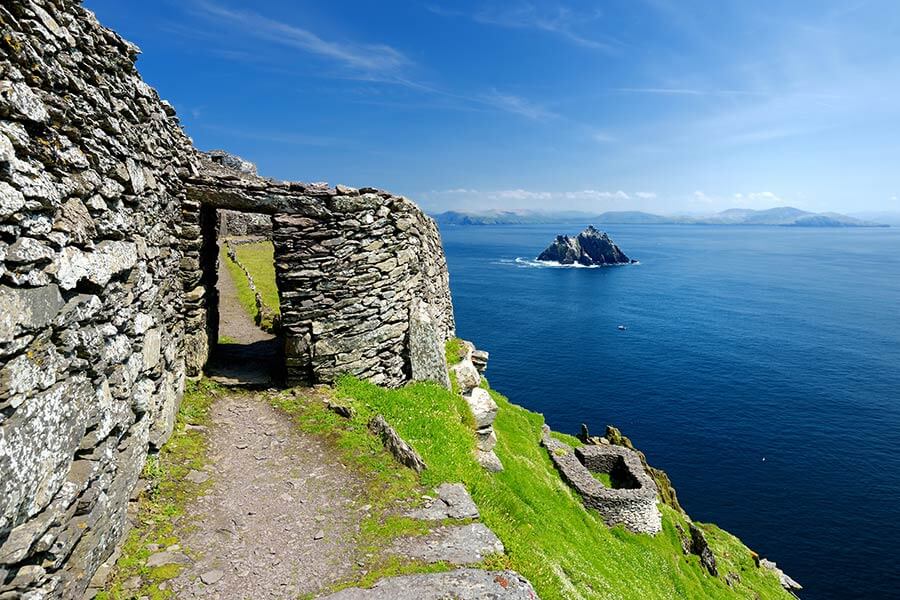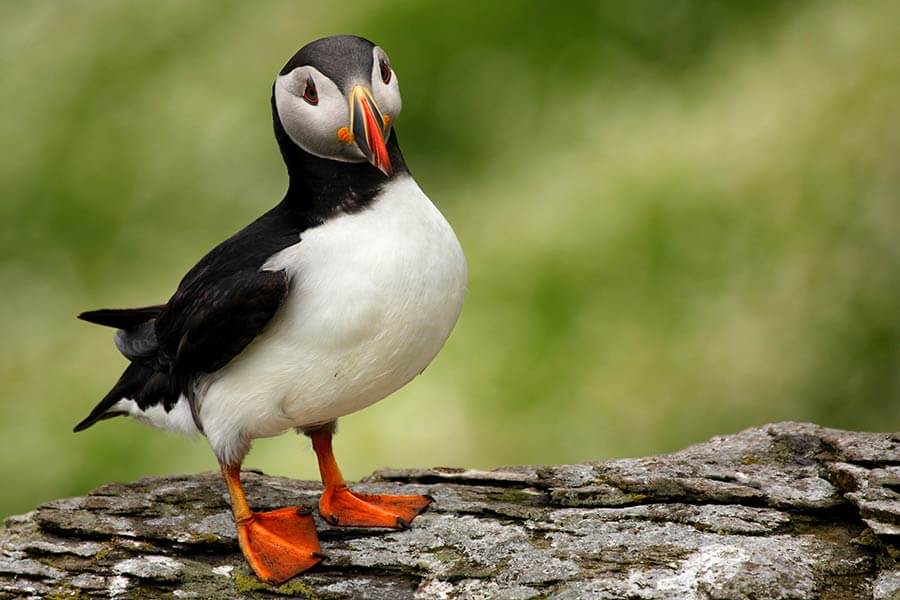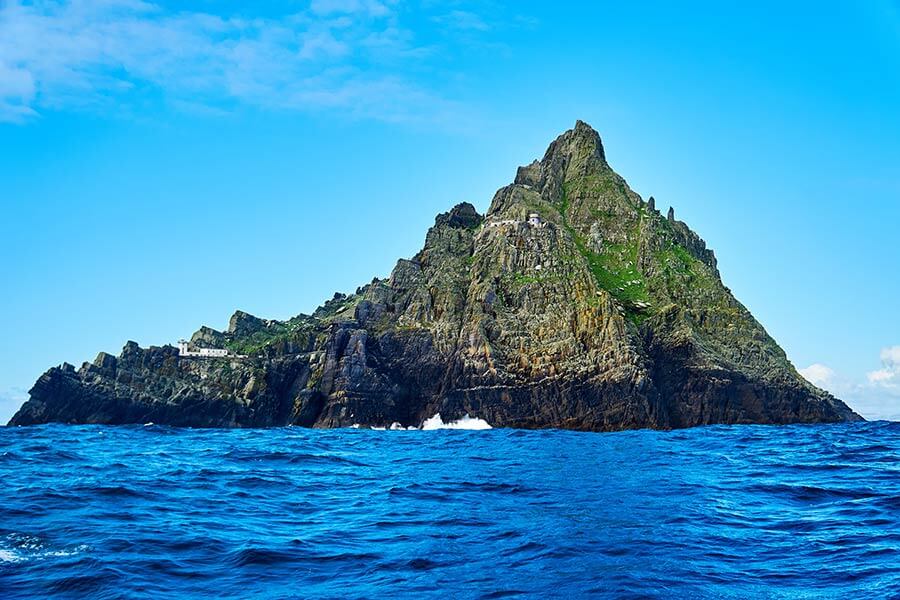The Wild Atlantic Way Story
The Wild Atlantic Way is set to be Ireland’s first long-distance touring route, stretching 2,500km along the Atlantic coast from Donegal to West Cork. At one point or other we’ve all wanted to escape from it all. But where would we go? We’d go west, of course!
Out at the very edge of Europe, the Wild Atlantic Way stretches for 2,400 km along Ireland’s western seaboard. From Donegal in the north to Cork in the south, through regions like Connemara, Galway Bay and Kerry … it’s the longest defined coastal drive in the world.
Here, the ocean’s force has carved a coast of wild, raw beauty … huge Atlantic rollers crash and churn, shaping jagged ocean crags, archipelagos and inlets, sea loughs, surfing strands, and the sheer granite walls of Europe’s tallest seacliffs. Rare sea eagles circle over glacial mountains, dolphins leap the waves, seals bask on the shore, puffins nest on cliff faces, geese gather in great estuaries.
And lighthouses safeguard sailors all the way up the coast – from Fastnet to Malin Head.
Right along this spectacular drive you’re aware of the elemental power of the Atlantic Ocean, turning from grey to green to azure blue as great weather fronts roll in and through. You’ll drive on routes that ring great peninsulas, reaching out into the ocean. Tiny roads hug the shoreline then switchback high above the Atlantic swell. Cloud-shadows race across sea and land, followed by shafts of sunlight. You’ll probably see a lifetime’s rainbows in just one trip…
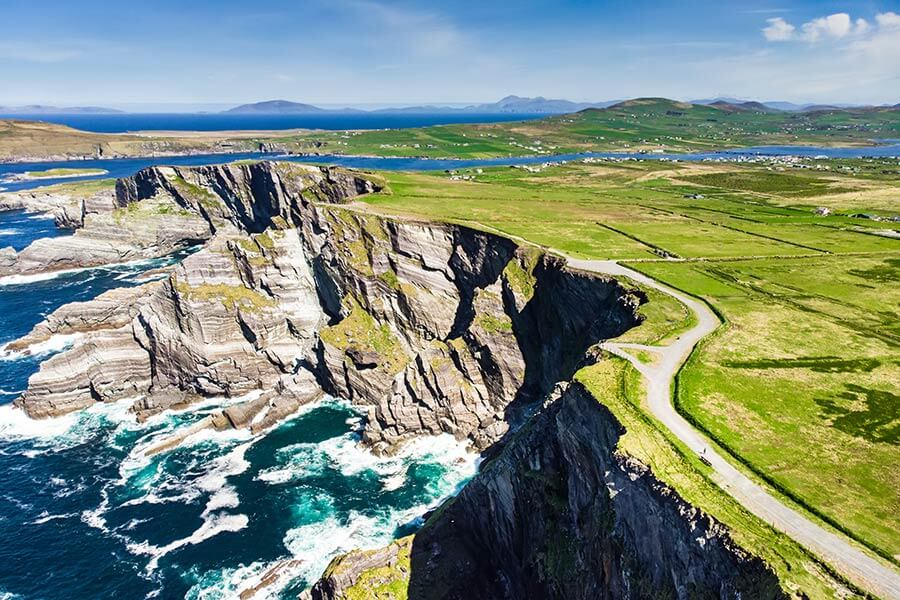
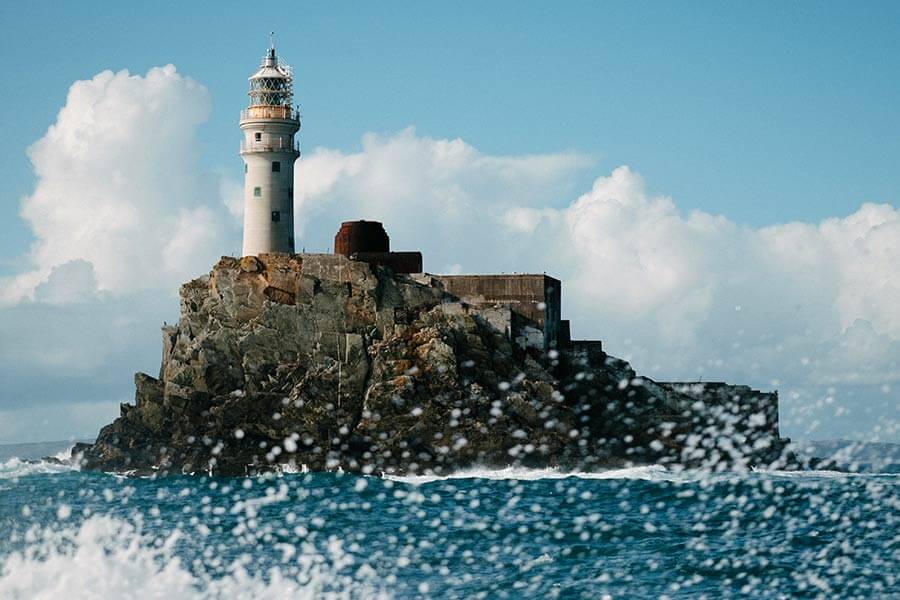

You’ll want to stop often at the many small settlements and towns along the route. Every few miles there are places to stretch your legs and have a bite to eat. Maybe you’ll hunker down and stay a night or two to get to know the places and the people … to climb cliffs, surf waves, ride bikes … to join in the craíc at sessions and festivals … to go island-hopping and visit ancient sites … to sit by turf fires in traditional pubs, where you’ll eat the freshest seafood and hear the Irish language, songs and stories. Out here in the west coast’s remote Gaeltacht regions, Irish is the mother tongue for many folk – and they’ll tell you “fáilte romhat isteach – you’re most welcome here”.
You could drive the whole route in one go – but you don’t have to. Instead, you may want to slow down, and dive in deep … For it’s out on these western extremities – drawn in by the constant rhythm of the ocean’s roar and the consistent warmth of the people – that you’ll find the Ireland you’ve always imagined.
Skellig Michael
Visit an extraordinary, far-flung place of pilgrimage
Eight miles off Kerry’s magnificent Iveragh Peninsula – where Ireland’s highest mountain range sweeps down to the wild Atlantic coast – is one of the wonders of the world: Skellig Michael. 1300 years ago, early Christian monks built a remarkable hermitage at the top of this jagged ocean crag – then at the furthest limits of the known world. Steep steps are carved into the rock. Near the 213 metres (700ft) summit is a collection of ‘beehive’ monastic cells: solitary places for contemplation and prayer, as far from the distractions of civilisation as it was possible to be. This extraordinary, far-flung place of pilgrimage – described by George Bernard Shaw as “part of our dream world” – is now a UNESCO World Heritage Site. It can be reached by the adventurous – for a sometimes life-changing visit – on a small boat from Portmagee or Ballinskelligs … but only when the weather allows, and only for those with good sea legs and a head for heights.
